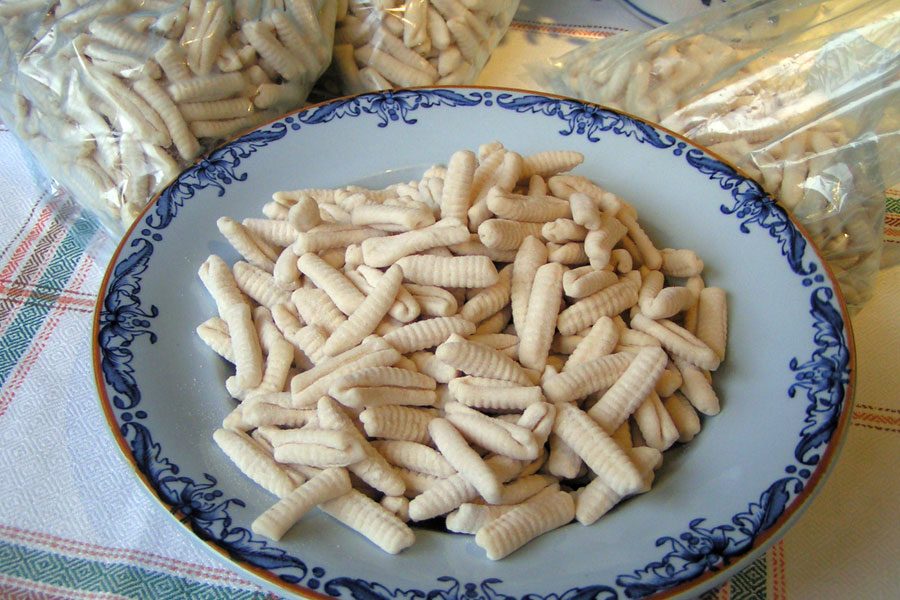Other Names:Pincinelle – in Marche |
Region: Throughout ItalyParticuarly in Southern Italy in Molise, Puglia, Campania, Basilicata, Calabria and Sicily |
Made with:Homemade is made with eggs, salt & semolina wheat. Manufactured is made with water, salt and durum wheat. It is also made using durum wheat, eggs and ricotta cheese, as well as sweet potato or white potato. There are also artisinal variations made with a burnt or toasted wheat which produces a smokey flavor. Recipe: |
About:A real classic pasta Cavatelli is generically know as Gnocchetti, Manatelle, Orecchie de Prete, Strasnari and Truoccoli. A specialty for several big religious holidays. It is served in many ways but it seems that the sauces preferred are oil based with chili (always) and a seasonal vegetable. A classic is butter and sage, but it can be served with a wide variety of sauces. The photo below is Ricotta Cavatelli that I made myself using a Cavatelli maker I purchased on Amazon. Handmade varieties aren’t usually folded so tightly. Cavatelli, also known as “cavatielle” in Molise dialect, is a type of short, shell-shaped pasta originating from the Molise and Puglia regions of southern Italy. The name “cavatelli” derives from the Latin word “cavare,” meaning “to hollow out,” referring to the distinctive hollow shape of the pasta. Origins and History: The exact origin of cavatelli is unknown, but it is believed to have been a traditional pasta shape in the Molise region for centuries. It was likely made by hand using a simple technique: forming small balls of dough into elongated shapes and then gently pressing them with the thumbs to create a hollow in the center. Cavatelli gained popularity in southern Italy during the reign of Frederick II (1194-1250), who was known to be a fan of this type of pasta. The dish “Cavatelli e Carne e Puorche” (Cavatelli with Pork Meat) is a traditional Molise specialty that dates back to this era. Characteristics and Texture: Cavatelli is typically made from durum wheat semolina and water, resulting in a firm and slightly chewy texture. The hollow shape of the pasta allows it to hold sauces and ingredients particularly well, making it a versatile pasta choice for a variety of culinary creations. This is also one of the best pasta’s for freezing. Pairings and Culinary Applications: Cavatelli pairs well with a wide range of sauces, including:
It is also commonly used in baked pasta dishes, pasta salads, and soups. Regional Variations: Cavatelli exists in several regional variations throughout southern Italy. In Campania, cavatelli are sometimes made with a ricotta cheese, creating a richer and more flavorful pasta experience. In Puglia, cavatelli are often served with broccoli rabe or rapini, a traditional pairing that highlights the pasta’s ability to capture and enhance the flavors of the sauce. Cavatelli remains a beloved pasta shape in Italy, enjoyed for its denser texture, adaptability, and ability to elevate any dish. Its origins in southern Italy and its regional variations reflect the rich culinary heritage of the region. |
||
Source: Wikipedia
|
Photo Credit: Bill Rubino
|
